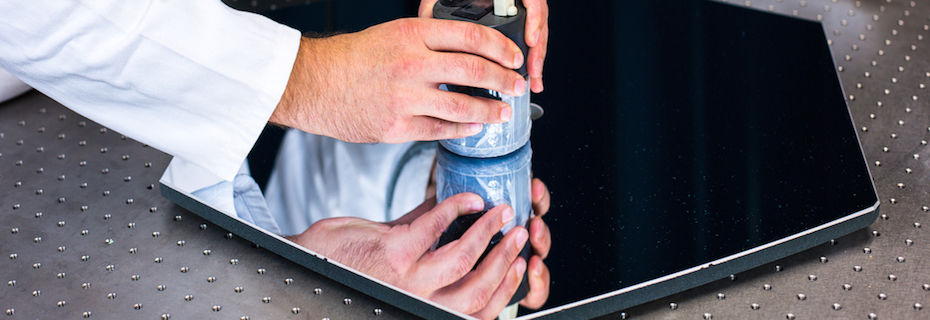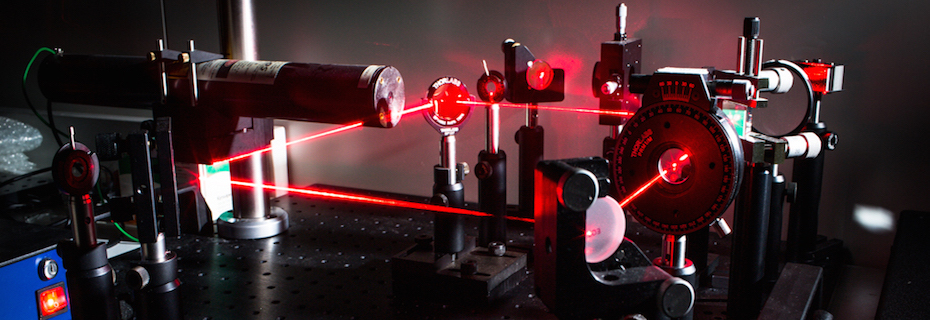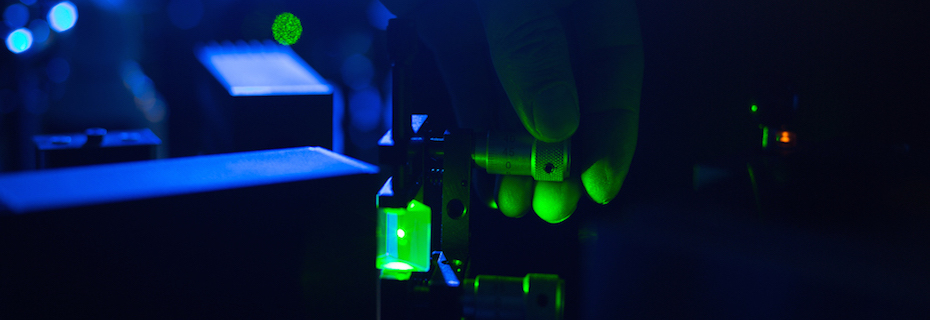Scientists Support the Restoration of the UNESCO-Listed Holy Trinity Column in Olomouc
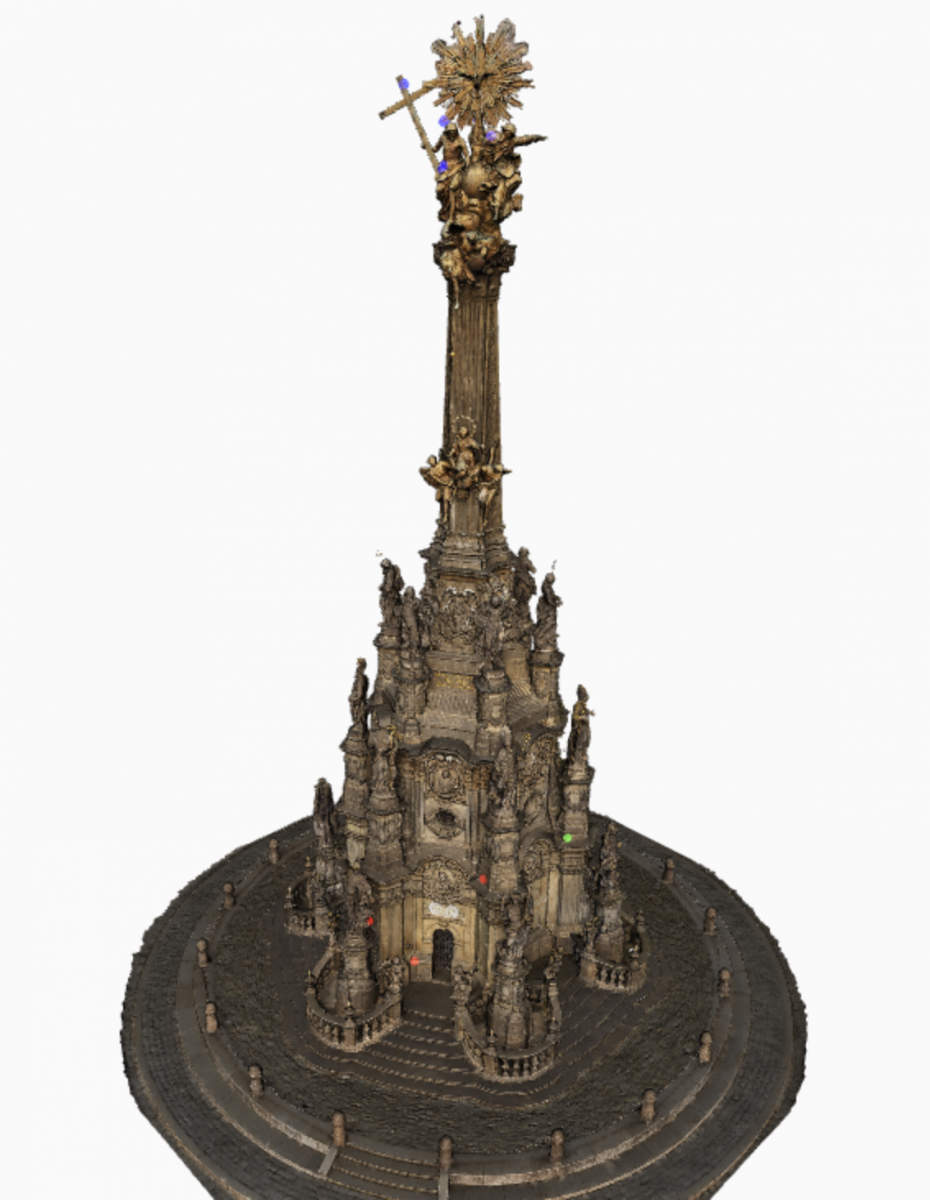
Experts from the Joint Laboratory of Optics of Palacký University and the Institute of Physics of the Czech Academy of Sciences are assisting restorers with the ongoing renovation of the Holy Trinity Column in Olomouc, a UNESCO World Heritage Site. Over the past several weeks, chemists, physicists, and geoinformatics specialists have conducted a detailed examination of the monument’s gilded sections. The data collected will guide restorers in carrying out a sensitive and scientifically informed restoration of this Baroque landmark.
The restoration project is led by conservator René Tikal under the professional supervision of the National Heritage Institute. Natural scientists were invited to collaborate to ensure the most precise possible restoration of the gilded surfaces through their specialized analyses and measurements. In addition to experts from the Joint Laboratory of Optics, the project also involves researchers from the Departments of Analytical Chemistry and Geoinformatics. Their work has focused on measuring the gloss of the column’s gilded elements and assessing their composition and current condition. The team includes Josef Kadlec, Karel Lemr, Jan Soubusta, and Martin Zeman from the Joint Laboratory of Optics; Petr Bednář and Lukáš Kučera from the Department of Analytical Chemistry; and Stanislav Popelka and Michaela Vojtěchovská from the Department of Geoinformatics.
“In the optical part of the study, we performed initial measurements using a glossmeter, a device designed to quantify surface gloss. The collected data provide an objective numerical description of visual differences and will be correlated with results from our colleagues in analytical chemistry. Next, we plan to conduct comparative measurements on in vitro alloy samples to determine which of them most closely matches the properties of the original material and could be used by the restorer during the reconstruction,” said Karel Lemr from the Joint Laboratory of Optics.
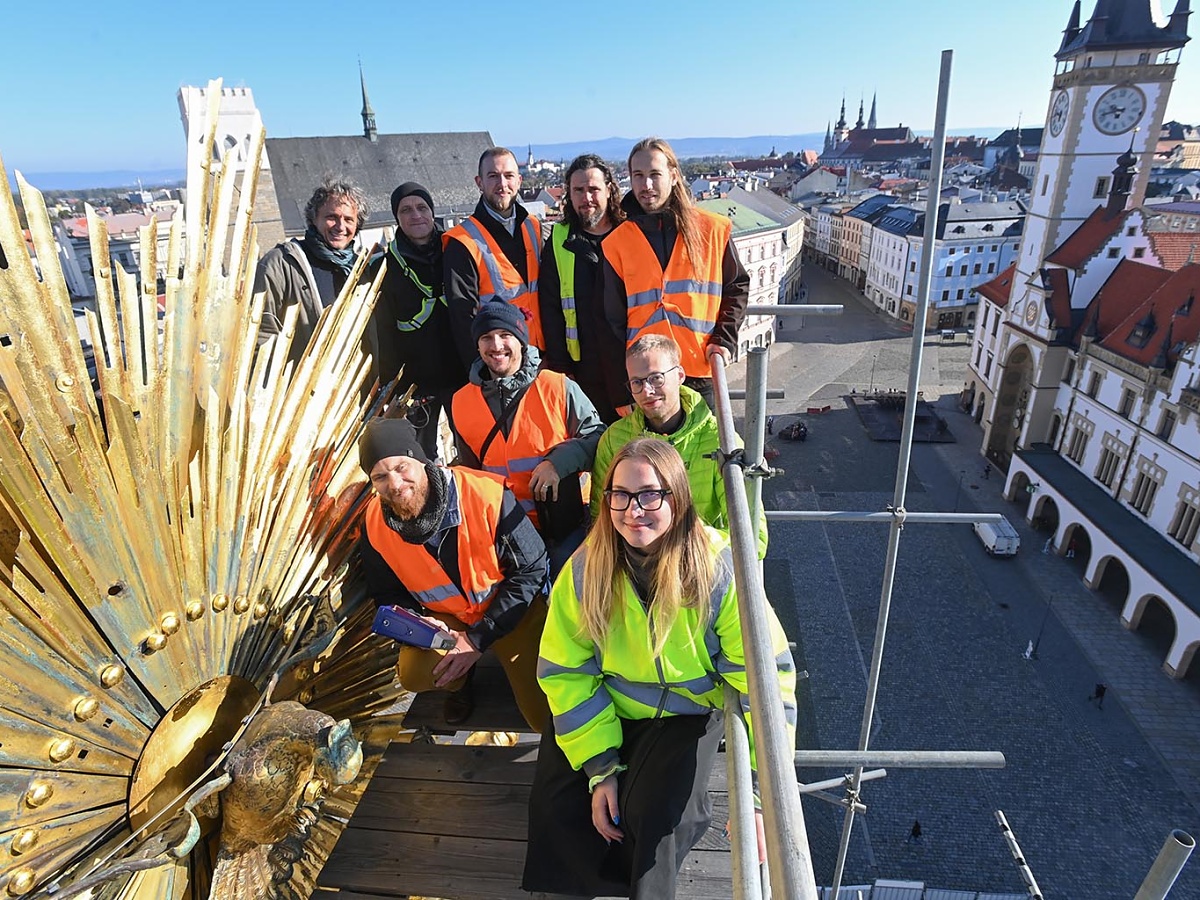
The Department of Analytical Chemistry focused on analyzing the material composition, primarily through X-ray fluorescence spectrometry. This technique allows researchers to determine the presence of individual elements in subsurface layers and to estimate the thickness of the gilding in different areas. “The results revealed concentrations of key elements such as copper, gold, and lead, from which we can infer the thickness of the gilded layer. The thinner the gilding, the higher the detected copper levels beneath it. Another important finding is the presence of lead, which is linked to historical gilding techniques. In the past, gilding was carried out at high temperatures using lead to help bond the layers. This method is no longer used today, partly because lead is toxic,” explained Petr Bednář from the Department of Analytical Chemistry.
The Department of Geoinformatics processed all collected data and integrated them into an interactive 3D model of the Holy Trinity Column. “The model serves as a data repository composed of interactive layers that can be easily searched and visualized. Authorized users can thus access individual measurements through a clear and user-friendly interface,” said Stanislav Popelka from the Department of Geoinformatics.
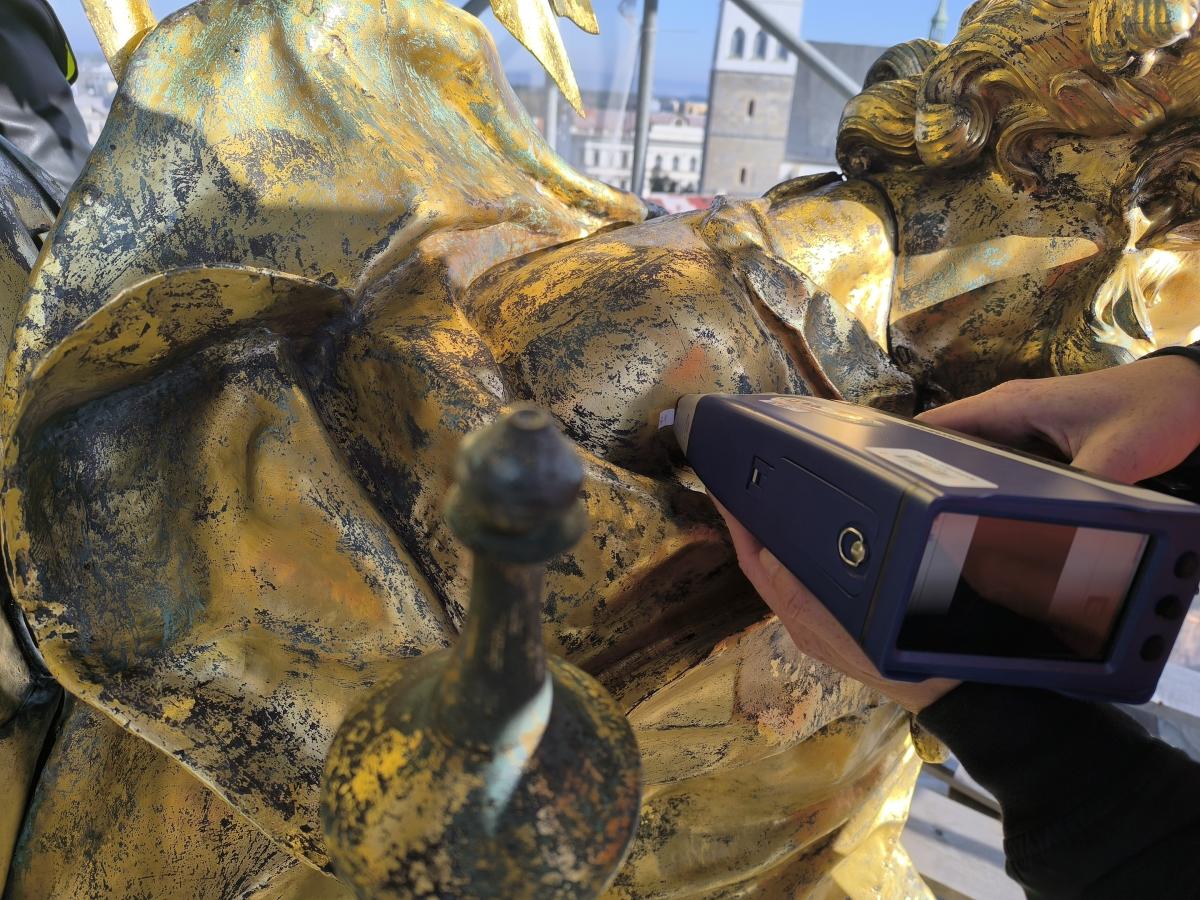
All measurements were conducted in the presence of restorer René Tikal and František Chupík from the National Heritage Institute. Scientists are now working with heritage experts and the restorer to interpret the collected data to support the optimal execution of restoration interventions.
The restoration of the 32-meter-high Holy Trinity Column began in the spring of last year and is expected to be completed by the end of next year. The total cost of the project is approximately CZK 30 million, most of which will be covered by a grant secured by the Olomouc City Council.

